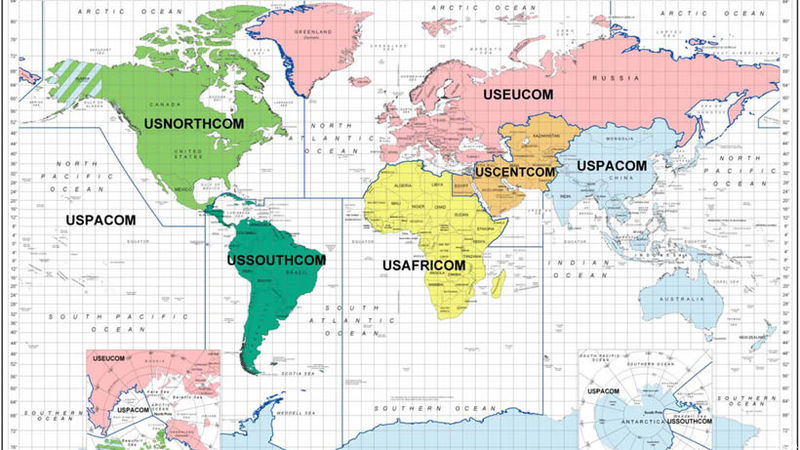U.S. Must Plan For, Pay For Strategic Unknowns — Even Now
Posted on

Before designing and articulating a new defense strategy, DoD officials must answer an important question: Will the most dangerous twenty-first century threats emerge more from unfavorable order or unacceptable disorder?
Unfavorable order is rooted in military competition with rising powers like China or Iran and conforms well to emerging concepts like Air-Sea Battle. Unacceptable disorder is the threatened “loss” of something critical to us — access, a key ally, nuclear surety, responsible control of strategic resources, etc. — that occurs as a result of some violent dissolution of authority. It demands armed intervention.
Senior officials, hoping to avoid anything approaching the painful experiences of the past decade, prefer the first and hope to ignore the second. They might want to reconsider. Their current course engenders enormous downstream risk. The good news coming out of Washington is that DoD’s on-going “strategic choices” work is happening in the first place. It has, after all, been painfully obvious for some time that DoD resources will shrink substantially under the twin pressures of the global recession and an end to the Iraq and Afghan Wars.
The bad news, however, is that the Pentagon’s work appears to be proceeding with a view of the world as some insiders would have it versus the world as it is or is likely to be. Unfortunately, hope is no substitute for strategy in this regard. While a cold war with China is possible, lethal challenges arriving via “disorder” elsewhere in the world are certainties. The most important of these may again require large-scale intervention in spite current DoD preferences, leaving responsive ground forces as the best U.S. hedge against crisis conditions growing fundamentally worse. Most strategists see the need for greater discrimination in choosing where and when to intervene in the future. Most of them also accept the need for more humility when defining the ends to be pursued once a decision to intervene is taken. Blind rejection of intervention as a general rule, however, and divestiture from the capacity to decisively intervene, pose unacceptable risks to core interests.
Intervention does not have to mean extended occupation, counterinsurgency, or nation-building, as some fear. It does, however, require maintaining the capability and capacity to forcibly establish favorable outcomes and to pursue manageable ends that prevent further harm, temper the worst effects of the crisis, and, in time, underwrite the emergence of a new, more stable status quo. While Donald Rumsfeld was wrong about the future character of war, he was dead on when he suggested that strategy should account for both “known knowns” and “known unknowns.”
Unfortunately, the former are the rage in contemporary Pentagon planning at the expense of meaningful exploration of the latter. We know, for example, that two costly wars are ending. We are sure China is ascending and we are pretty certain Iran has nuclear ambitions. We know North Korea remains erratic and dangerous. And, finally, we are fairly confident that terrorism is entering a more manageable post-bin Laden era. There is a lot of work to do in the face of all of these challenges.
However, U.S. presidents also have a number of levers to pull short of military confrontation to shape them as well. The list of “known unknowns” is another story entirely. These contingency events are, by definition, less preventable. All are, for the most part, born of “unacceptable disorder.” And, the most important and threatening among them would be enormously disruptive, making them impossible to ignore. Thus, emergence of one or more these may result in future U.S. intervention.
The following are illustrative. What options should the United States retain to respond to contagious violence in the Middle East? What might the United States have to do in case of civil war in Mexico or Cuba, regime collapse in nuclear-armed North Korea or Pakistan or the violent disintegration of Russia? Further, what role, if any, might U.S. forces play in containing unfavorable turns in the Arab Spring — an Egyptian civil war, resurgent violence in Iraq, or an Iranian proxy war against the Gulf Arab states? Finally, what if the Arab Spring itself is only the vanguard of a more generalized global trend where other important governments prove more vulnerable than many expect to sudden social and political unrest.
Carefully weighing DoD’s roles under circumstances like these is as important as preparation for the military containment of China or Iran. After all, major contingency responses to many of these “known unknowns” may in fact be far more likely than war with any prospective state competitor. Frankly, DoD cannot make seismic choices about future strategy and capabilities without careful consideration of a number of contingency events that some consider impolitic or inconvenient.
Regardless of how unthinkable future interventions are today, consequential “disorder” may require deployment of thousands of Americans in harm’s way. To assume otherwise may be economical over the near-term but is also naive strategically. Though we are entering a period of defense austerity and restraint, we need to maintain an “all hazards” vision for defense. DoD cannot again be allowed to prepare for conflicts it prefers at the expense of preparing for those unpreventable and distasteful conflicts it is most likely to get.
Nathan Freier is a senior fellow at the Center for Strategic and International Studies and a professor at the Army War College’s Peacekeeping and Stability Operations Institute. He is principal author of the CSIS study, “U.S. Ground Force Capabilities through 2020.“
Subscribe to our newsletter
Promotions, new products and sales. Directly to your inbox.
